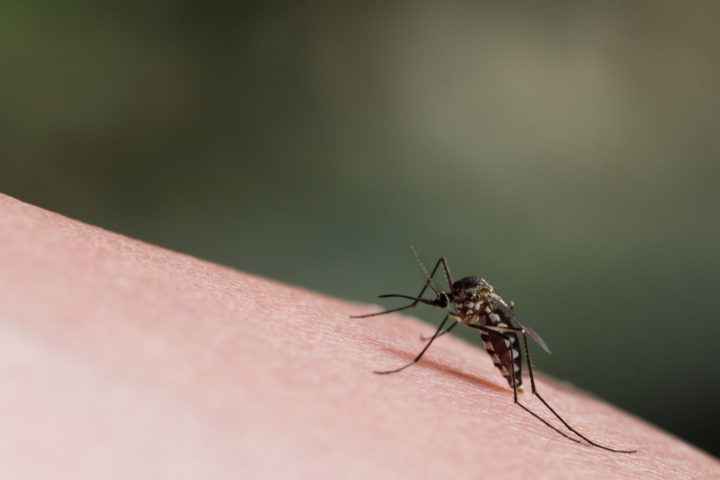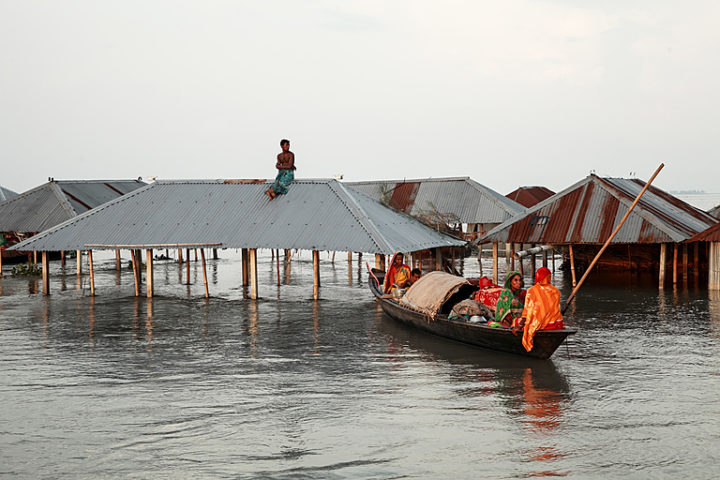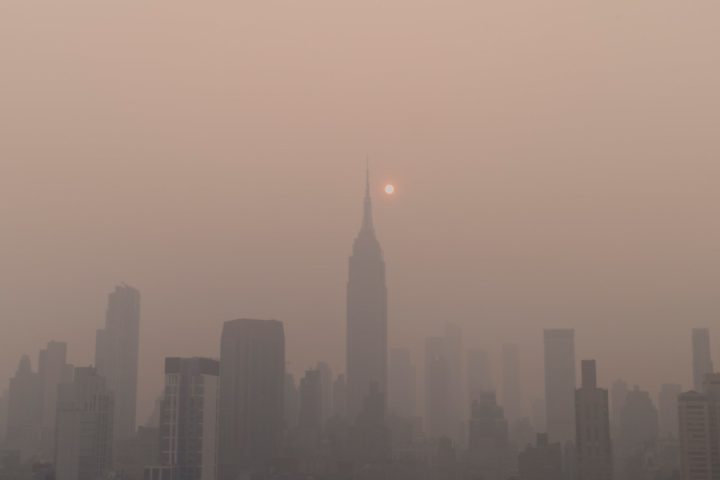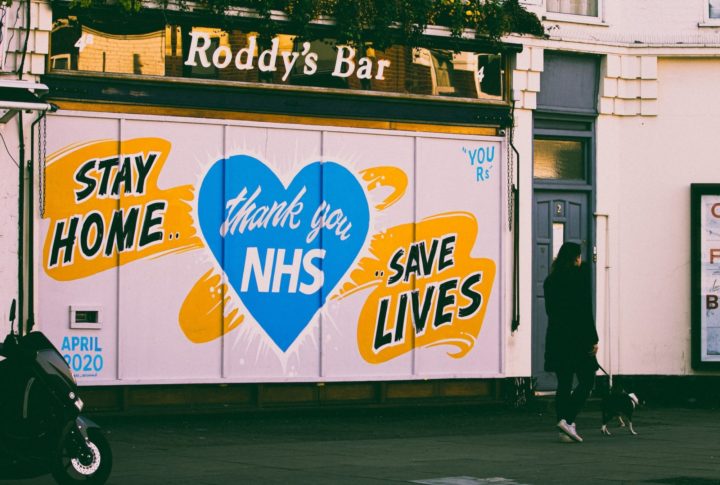Road to Dubai: COP’s first Health Day
As climate impacts worsen, the harm to health caused by climate change comes into sharper focus. As COP28 includes the first 'health day' at a climate summit, we look at climate and health.

By Gareth Redmond-King
@gredmond76Share
Last updated:
The gravest threat to human health is climate change, an editorial published in over 200 global medical journals around the peak of the Covid-19 pandemic warned. But the impact of the climate crisis on the human body has been overlooked at COP summits until now. This year COP28 will hold the first Health Day, hoping to bring about “a watershed moment for climate and health.”
Excluding health from the discussion was, many have argued, a significant oversight. Already World Health Organisation research shows one in four deaths are down to preventable environmental causes. And the WHO has predicted between 2030 and 2050 climate change will cause an extra 250,000 deaths per year from malnutrition, malaria, diarrhoea and heat stress.
Fossil fuels
“The climate crisis is a health crisis,” WHO Director-General Dr Tedros Adhanom Ghebreyesus said. But just 0.5% of climate funding currently goes to health projects; the inclusion in this year’s COP will seek to change that.
It will only change, though, say health and climate experts, if the outcome from the discussions is a balanced one. The UAE Presidency are keen that COP28 should secure new funding for tackling major diseases like malaria and boosting health systems’ responses to climate change. Whilst hugely welcomed by health advocates, they will also be pressing for this to be balanced with a clear focus on the only solution to halting worsening health impacts from climate: that is to end the burning of fossil fuels, to tackle climate change and the related problems it causes, which we discuss here.
Mosquitoes

Mosquitoes are serial killers. Throughout human history malaria has caused the deaths of more people than any other disease. For decades, we have been at war with mosquitoes, seeking ways to curtail their numbers and cut the spread of disease. Thanks to the growing use of pesticides and bed nets, we were winning. Between 2000 and 2015 malaria fatalities fell 40% from almost 900,000 to 562,000.
But since then, infections and deaths have been rising again. This is partly because mosquitoes are evolving to survive the insecticides that have been used against them since the 1970s. It is also because heat and floods expand the areas where disease-carrying mosquitoes can breed.
Bone-shuddering and deadly viruses such as dengue, zika and chikungunya have travelled to places they had never been before. This summer, 2023, health authorities fumigated parts of Paris to eradicate tiger mosquitoes whose swift advance across Europe has been linked to a warming climate. In August, France recorded its first indigenous cases of dengue fever.
2023 was the hottest northern hemisphere summer on record – a summer in which the US saw the first locally transmitted cases of malaria in 20 years. Meanwhile, Bangladesh is in the clutches of its largest ever dengue fever outbreak, caused by high rainfall, heat and humidity, bringing with it a surge of mosquitoes. In Latin America there were more cases of dengue in the first half of 2023, than for all of 2022. Deaths from chikungunya and other mosquito-borne viruses are also rising across the world.
Floods

Globally floods have created an “unprecedented” number of cholera outbreaks, according to the WHO. Not only is the disease spreading, but cases are more deadly. It is another example of a reversal in progress. Cases of cholera had been declining, but now they are rising again. The WHO described the impact of climate change on cholera as “very visible.”
Cholera comes from a water-borne bacteria that infects the small intestine, causing severe, life-threatening diarrhoea. It is highly contagious, and floods increase exposure. Drought also causes the spread of cholera because when there are water shortages, many more people will flock to using the same, limited, sources of water.
Pakistan’s record monsoon rains and melting glaciers in the northern mountains in 2022 created a deluge that swept across the country and displaced 33 million people. The displaced were forced to rely on drinking flood water. And although there were few cases of cholera before the floods, since then 1.5 million people reported watery diarrhoea. 987 cases were confirmed as cholera, but fewer than 2% were tested, so the real numbers are likely to be far higher.
Malawi had almost wiped-out cholera, recording just two cases in 2021, but now numbers are surging back. Heavy rains and floods caused by tropical storms and cyclones have destroyed latrines and handwashing facilities. As of July 2023, all 29 districts of the country had outbreaks and 1,766 people had died. Although cholera typically kills one percent of those infected, the death rate in Malawi has been three times that.
Heatwaves, wildfires and air pollution

Heatwaves in Europe caused 61,000 extra deaths in 2022, making it the deadliest summer ever recorded. 2023 was even hotter, but the fatalities have not yet been counted. Countries in southern Europe – Italy, Greece, Spain and Portugal – had the highest toll from heat-related causes, as they experienced the worst of the high temperatures.
Extreme heat exacerbates underlying conditions such as heart and lung disease and hospital visits from the elderly in southern Europe grow more frequent in the summer months.
Soaring temperatures also cause heatstroke, which happens when the body’s normal cooling mechanisms fail. Body heat rises rapidly, but the body cannot sweat to cool down. It can be deadly – particularly when very high temperatures and high humidity coincide, to make it even harder for human bodies to regulate their temperature. Small children, the elderly and those with underlying health conditions are most at risk.
Higher temperatures also cause respiratory problems because they contribute to the build-up of harmful pollutants in the air.
Smoke from wildfires in Canada turned the sky orange across the country, and in the northern and eastern United States in June of this year. This was when New York had the most toxic air ever recorded.

Wildfire smoke contains high levels of the tiniest and deadliest form of pollution, known as PM2.5. It is microscopic specks of soot or particulate matter that embeds deep in the lungs and enters the blood steam.
Wildfire smoke, predicted to be one of the most widely felt impacts of climate change in the US, is unravelling decades of air quality gains, according to research by Stanford University. And the problem is expected to get worse, not just in America, but around the world.
More than two billion people were exposed to at least a day of wildfire smoke pollution between 2000 and 2019, a study in Nature found.
But the global air quality problem isn’t just about smoke from wildfires, pollutants come from myriad sources and an investigation by The Guardian revealed that 98% of Europeans breathe in toxic air linked to 400,000 early deaths a year.
The ten countries with the dirtiest air are outside of Europe; Chad has the worst air quality, followed by Iraq and Pakistan. Current WHO guidelines state that annual average PM2.5 should not exceed 5 micrograms a cubic metre (µg/m3). In Chad it is 89.7. Road traffic, heating, agriculture and industry are the main sources of PM2.5.
Cars and vans burning fossil fuels – petrol and diesel – are the worst polluters and air quality maps show the most hazardous air is around major roads. Most UK cities have PM2.5 that is at least twice the WHO recommended levels. London has 9,400 premature deaths a year from dirty air, costing the NHS up to £3.7 billion. Ella Adoo-Kissi-Debrah, aged nine, who lived near the South Circular in Lewisham, died of a severe asthma attack in 2012 and became the first person to have air pollution recorded as a cause of death. But across the UK there are 40,000 early deaths a year from air pollution, the Royal College of Physicians found.
Dirty air impacts almost every organ in the body and is linked to heart and lung disease, cancer and diabetes, depression and other mental health problems, cognitive impairment, education difficulties and low birth weight. The transition to electric vehicles, and policy tools that reduce car use and drive a modal shift to more active travel reduce the risks posed from air pollution, as well as cutting carbon emissions.
Covid and ebola

Environmental destruction helps zoonotic diseases such as Covid-19 and Ebola travel from animals to humans. And these kinds of diseases are cropping up more frequently. Deforestation, a warming climate and shrinking natural habitats force humans and animals into closer quarters and accelerate the spread of disease.
Ebola originated in fruit bats, evidence suggests, but other animals such as monkeys, apes and antelopes host the disease. It was first recorded as jumping from animal to human in 1976, when there were two outbreaks of fatal haemorrhagic fever in central Africa.
Ebola outbreaks are becoming more frequent because of climate change, the WHO found. Bats and other animals are driven to new areas by changing temperatures and weather crises, bringing them into closer contact with humans. Ebola epidemics happen on average every 17 years, but with population growth and climate inaction they will occur every ten years by 2070, modelling by Nature demonstrated.
And they have a devasting human cost. Ebola kills about half of the people it infects, the last major outbreak from 2014-2016 in West Africa claimed 11,325 lives.
Health, climate and COP28
Half the world’s population lives in climate change hotspots and deaths from floods, droughts and storms are fifteen times higher in these vulnerable regions, the Intergovernmental Panel on Climate Change said in its latest report. The link between climate change and human health is undeniable. Malaria, cholera, heat, fires, pollution, Covid-19 and Ebola – climate change endangers life.
So, it really does seem about time that health is on the agenda at a COP summit. That means a focus on adapting to, and treating the health issues caused by climate change, but also addressing the only solution to halting further worsening of the problem: ending the burning of fossil fuels.
Share